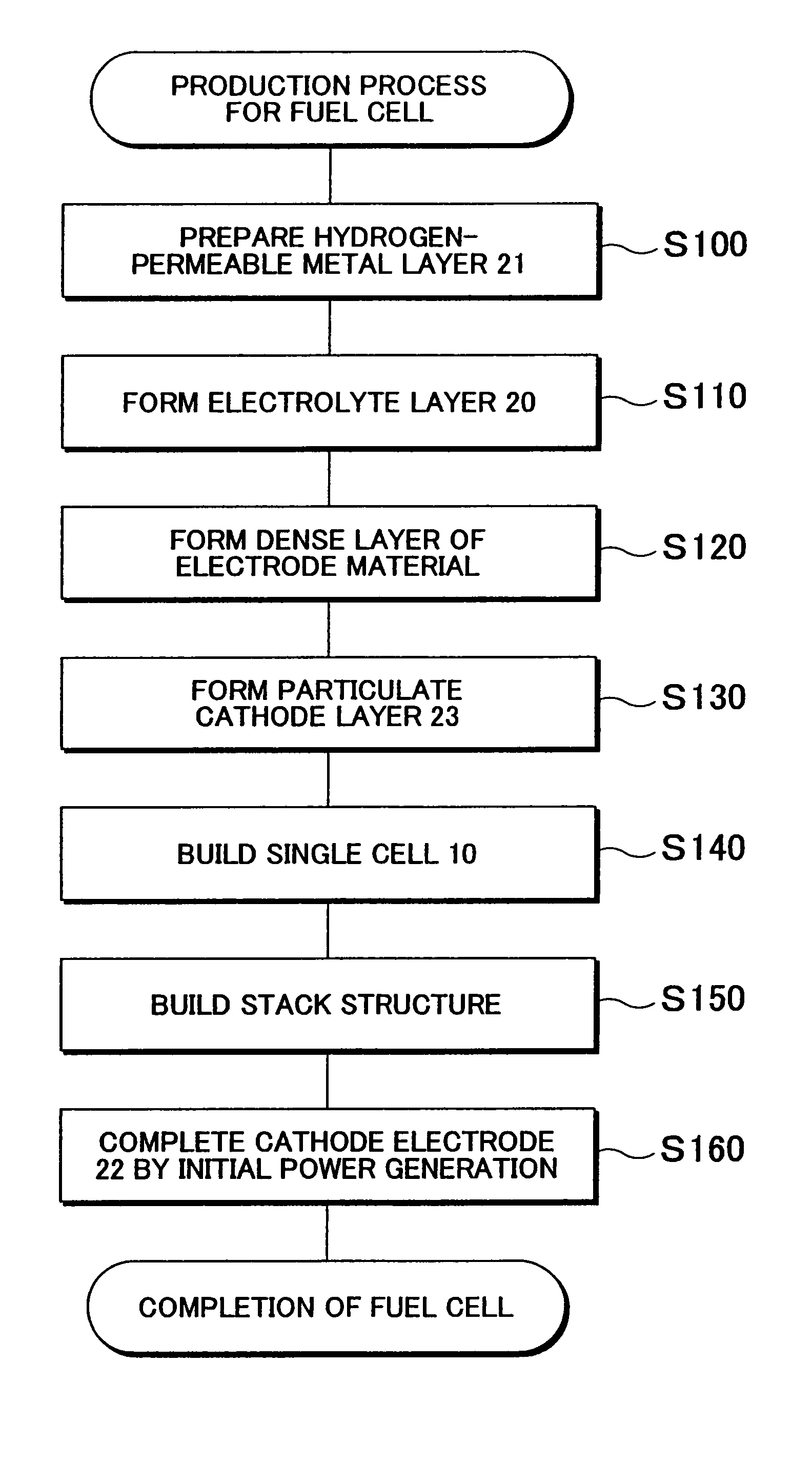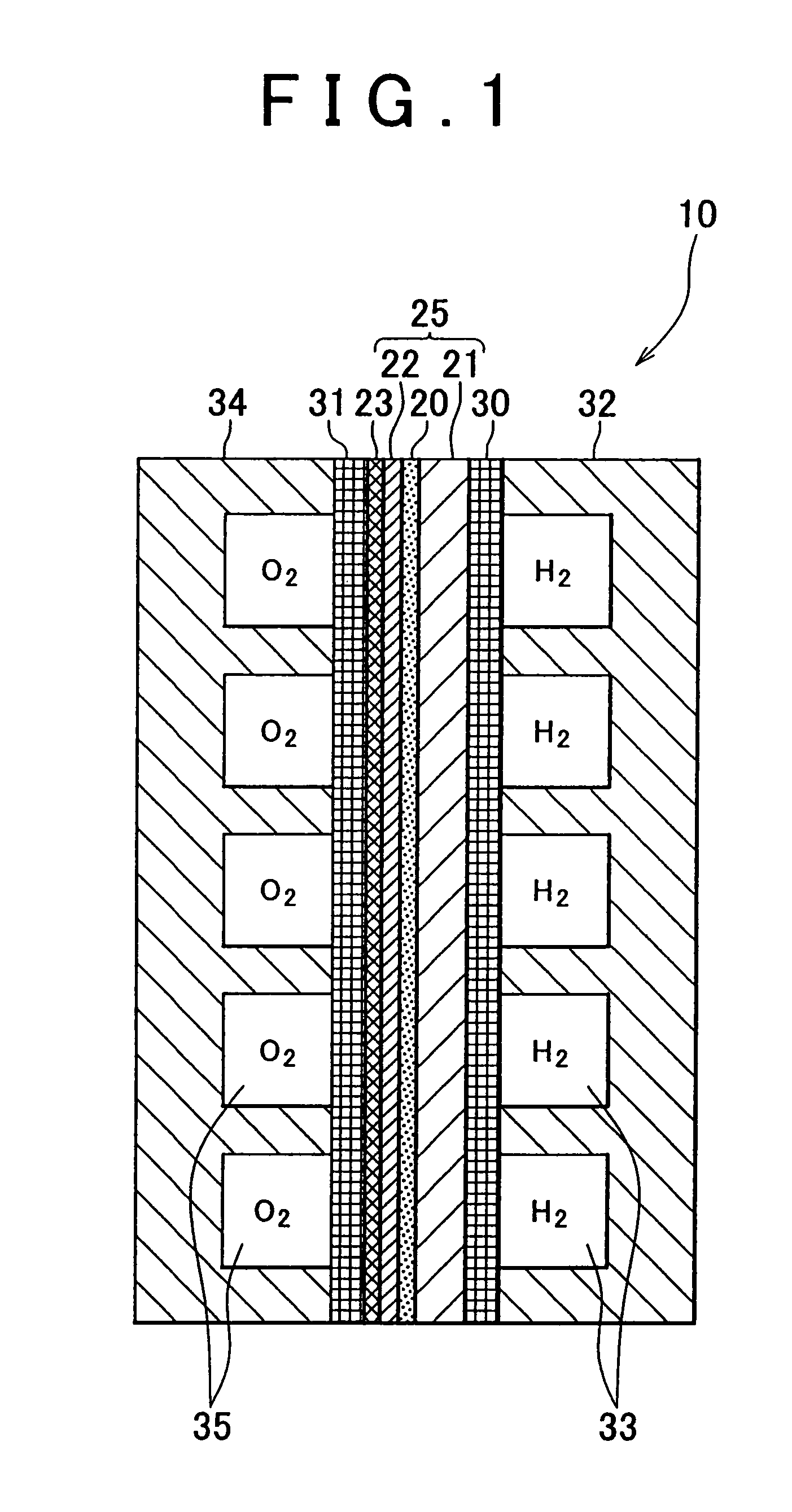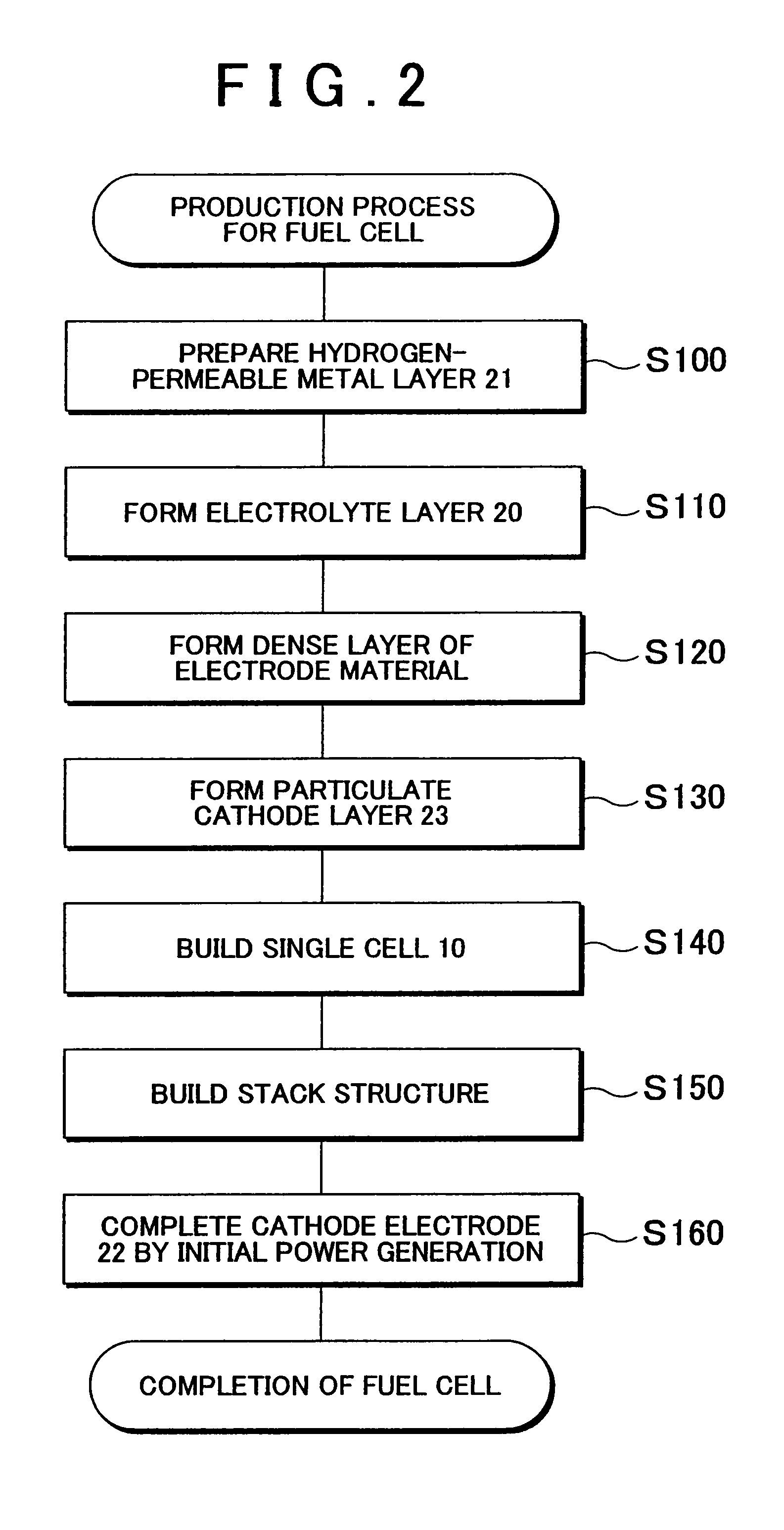Fuel cell production method and fuel cell
a fuel cell and production method technology, applied in the direction of cell components, final product manufacturing, sustainable manufacturing/processing, etc., can solve the problems of complicated production process, achieve sufficient porosity, convenient and convenient electrode production, and sufficient current collection characteristics
- Summary
- Abstract
- Description
- Claims
- Application Information
AI Technical Summary
Benefits of technology
Problems solved by technology
Method used
Image
Examples
examples
[0076]Fuel cells of the first and second samples of the invention, and a fuel cell of a first comparative example were produced, and their cathode electrodes were compared in appearance.
(A) Production of Fuel Cell
(A-1) First Sample
[0077]The fuel cell of the first sample has a construction similar to that shown in FIG. 1. In the fuel cell of the first sample, a Pd substrate of 80 μm in thickness was used as a hydrogen-permeable metal layer 21. Furthermore, the electrolyte layer 20 was fabricated by forming a layer of BaCe0.8Y0.2O3 of 2 μm in thickness as a film on the hydrogen-permeable metal layer 21 through the PLD method. The dense layer 22a for forming the cathode electrode 22 was fabricated by forming a layer of La0.6Sr0.4CoO3 of 25 nm in thickness as a film on the electrolyte layer 20 through the PLD method. The particulate cathode layer 23 was formed by screen printing through the use of a paste containing fine particles of 0.9 μm in average particle diameter made of the same ...
PUM
| Property | Measurement | Unit |
|---|---|---|
| thickness | aaaaa | aaaaa |
| thickness | aaaaa | aaaaa |
| thickness | aaaaa | aaaaa |
Abstract
Description
Claims
Application Information
 Login to View More
Login to View More - R&D
- Intellectual Property
- Life Sciences
- Materials
- Tech Scout
- Unparalleled Data Quality
- Higher Quality Content
- 60% Fewer Hallucinations
Browse by: Latest US Patents, China's latest patents, Technical Efficacy Thesaurus, Application Domain, Technology Topic, Popular Technical Reports.
© 2025 PatSnap. All rights reserved.Legal|Privacy policy|Modern Slavery Act Transparency Statement|Sitemap|About US| Contact US: help@patsnap.com



